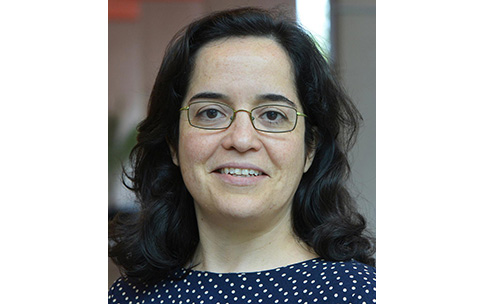
Building tools to map our DNA
Dr. Ana Pombo is a Professor at the Berlin Institute for Medical Systems Biology at the Max Delbruck Center for Molecular Medicine. Her lab developed a pioneering technique called Genome Architecture Mapping (GAM). This technology combines an imaging-based approach with a high-throughput method called genomics to map which regions of the genome are physically close to one another in the cell nucleus. With GAM, users can simultaneously view the nuclei of cells and capture position information in three-dimensions for different regions of DNA inside the nuclei that come together for proper gene regulation. Dr. Pombo joined 4DN to improve GAM and has so far succeeded in streamlining the protocol to make it cheaper, faster, and easier to use. For example, GAM requires very few cells and can be used to study many different and difficult-to-study cell types, such as neurons, an improvement over existing technology. Her lab is now collecting large datasets that will hopefully reveal the full power of GAM. One dataset includes 3,000 nuclear images that will be analyzed and compared to other technologies to gain new biological insights. In a parallel project, Dr. Pombo’s lab will also apply GAM to look at rare cell types in complex tissues such as the brain.
Dr. Pombo has worked on 3D genome organization for her entire research career. Although she originally considered a career in conventional architecture, her curiosity about how things work with respect to how they are structured led to a career in genomic architecture. Her passion is studying structures like the nucleus, where many variables must work together for the complex genome to function across different cell types. While much progress has been made in the field since Dr. Pombo first started, she explains that observations made during the time of her graduate and postdoctoral training are now back in the spotlight thanks to technological advances that are enabling deeper investigation of basic questions. Dr. Pombo has focused on developing these cutting-edge techniques. For example, she developed cryoFISH, a precursor to GAM, to see where specific genes were located in the nucleus. This technology could only analyze a few genes at a time, so she developed GAM to study all genomic locations simultaneously and gain a holistic understanding of how genomic systems work. Dr. Pombo credits the 4DN program as an outstanding opportunity to engage with peers, including internationally, over new technologies and research findings in the field of nuclear architecture and function.


